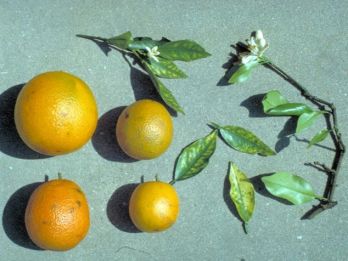Citrus blight disease
Citrus blight is a disease that causes overall tree decline and worldwide losses in the citrus industry.
Background
Blight can affect all major rootstocks and seedlings but is most severe on rough lemon, Rangpur lime, trifoliate orange and citrange rootstocks.
Trees grown on sweet orange, sour orange, mandarin, and some citrumelo rootstocks have lower incidences of blight and may not exhibit symptoms before they are 15 to 20 years old.
The disease is found in mostly tropical or semitropical areas with moderate to heavy rainfall. It occurs in citrus-producing regions including North America, the Caribbean, South America, South Africa.
Citrus blight is known to exist in Queensland. Entry of plants and citrus propagation material, excluding seeds, is prohibited in South Australia under Condition 3 of the Plant Quarantine Standard.
Impacts
Citrus blight causes water uptake within the wood to reduce, the bark and outer tissue become plugged, and zinc deficiency patterns develop in the leaves. New smaller xylem vessels are produced in higher numbers but eventually become plugged.
Trees remain in various stages of decline and become unproductive, but they rarely die. Fruit from trees affected by blight remains edible.
Blight has not been transmitted by ordinary budding or grafting practices. However, grafting roots of blight afflicted trees to healthy ones will cause them to develop symptoms in about 2 years. Natural root grafting of adjacent trees has been associated with spreading the disease.
Management
Although citrus blight was described more than one hundred years ago, its cause is unknown, and the pathophysiology is not well determined.
The only control measure for blight is to replace declining trees with trees on rootstocks that are less susceptible to the disease. Signs of suspected blight must be reported immediately.
Identification
Affected trees grow normally until they reach 5 years of age or older, and then begin to wilt and to exhibit:
- leaf loss
- reduced growth flushes
- die back
- general decline.
In early stages of blight, the symptoms may be restricted to one sector of the tree and then expand to the entire tree. Vegetative sprouts are produced on the trunk or on larger interior branches.
The initial distribution pattern of affected trees within a grove appears random. The disease spreads to adjacent trees within the row more often than across rows.

